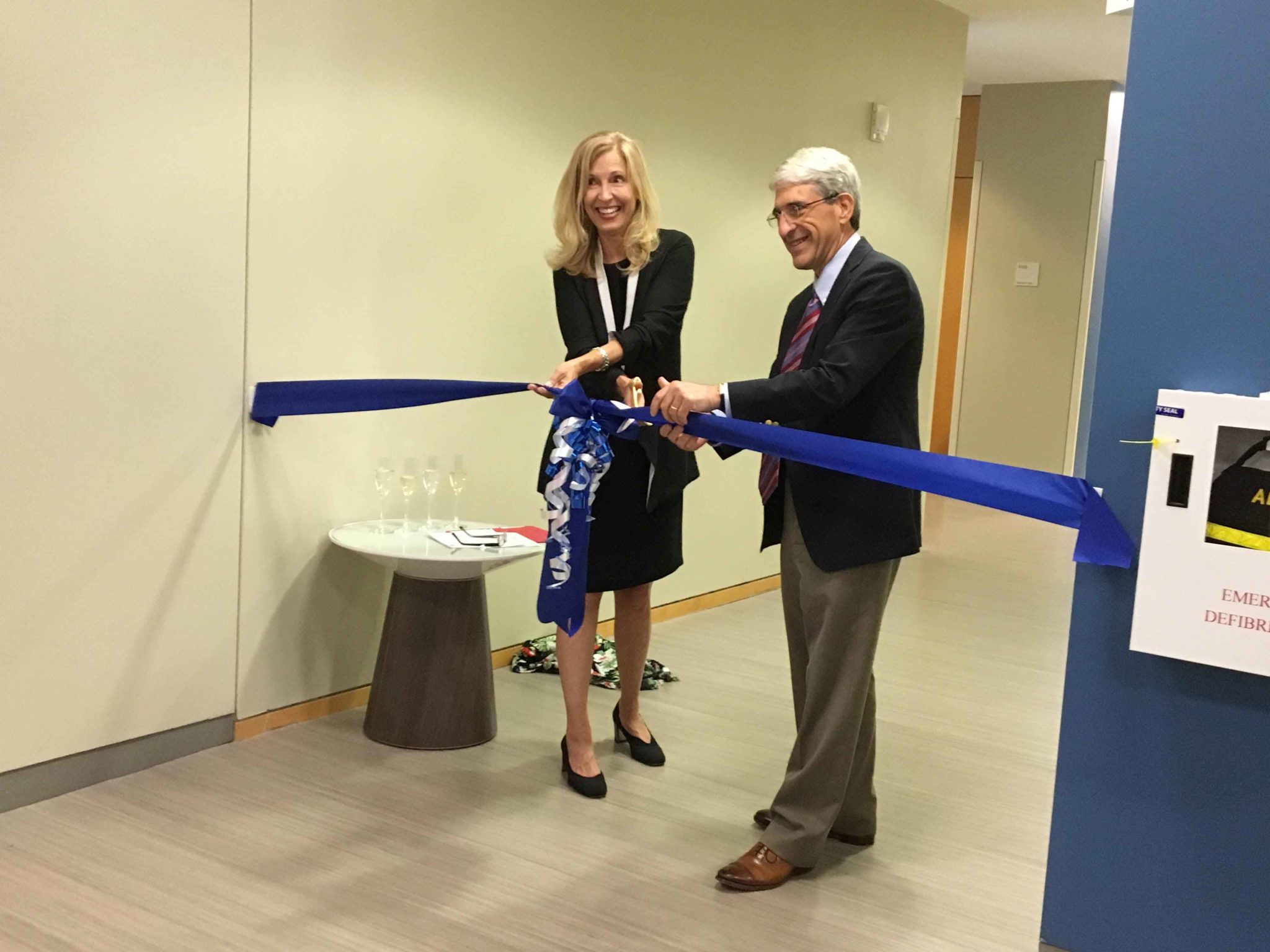
The School of Nursing celebrated the opening of its brand-new Simulation Lab with a ribbon cutting ceremony on Thursday afternoon, approximately six months after first breaking ground on the project.
University President Peter Salovey was on hand for the event, joining Ann Kurth, dean of the School of Nursing, in cutting the lavish blue ribbon cordoning off the new lab and officially inviting the nearly 70 students, faculty members and visitors to step foot into the high-tech teaching space. Designed to look like a real-world health care setting, the $5 million project consists of an 8,000-square-foot space in which nursing students can prepare themselves for scenarios they may encounter as nurse practitioners or midwives, Kurth said.
“I can’t tell you how thrilled I am to see the opening of a wing I didn’t even know was here, that really allows for the education of students using patient actors and lets you practice disaster scenarios and conventional situations,” Salovey said.
Prior to the project, the School of Nursing had a smaller, less glamorous simulation space tucked away in the building’s basement.
Simulations provide a safe learning environment where students can apply theory into practice, said Ginger Sherrick, director of the Simulation Lab.
“You wouldn’t show up at a professional baseball game without practicing, so this is just like that,” she added. “It’s making sure that you are competent and confident before actually performing any of these procedures.”
The whirlwind project first broke ground in February, with administrators hoping the lab would be ready for the incoming class in the fall. According to Kurth, the project came in both on time and under budget, a situation so rare in academia that it drew laughter and applause from the audience. Ceremony attendees enjoyed hors d’oeuvres and wine as they wandered around the state-of-the-art facilities. In each room, a guide explained how students, whose fall term began a few days prior, will use the various mock examination rooms.
Students interviewed expressed excitement about the new facilities, some of which will be open to them 24 hours a day.
“Our faculty really go to great lengths to make sure that we as students feel that we are in a safe environment and that we never feel judged or criticized for our performance,” said Alexis Ingco NUR ’20. “We know that we’re here to learn, which is why I love, love, love, simulation.”
Elizabeth Lee NUR ’19 was particularly impressed by the plethora of rooms dedicated to observation and debriefing. Prior to the opening of the new lab, those evaluations took place haphazardly in classroom space, so the specific designation of rooms built for those purposes will cut down on a lot of confusion, Lee said.
Many of the simulations use “standardized patients” — real people who act out a variety of situations and ailments. Others use mannequins that can mimic everything from bleeding to delivering a mannequin baby, Kurth said. In a short speech before the ribbon cutting, Salovey recounted “meeting” one of these mannequins, an experience which he jokingly described as “slightly creepy.”
To Kurth, the value of the new and improved Simulation Lab lies in its use of increased space and new technologies. These improvements better align the school with the future of health care and the needs of a larger student population, she added.
Many of the spaces integrate new technology into the traditional teaching experience. In the primary care assessment lab, a hospital bed at the front of the room come equipped with a camera, and approximately 20 others are each accompanied by a monitor. By filming the patient care experience, students can watch and apply a professor’s instructions in real time, Sherrick said. This is a marked improvement from the practice of having 20-plus students crowding each other in order to get a look at a single mock patient, she added.
Before stepping away to socialize with the crowd, Salovey, whose mother and grandfather were both nurses, had a few words for the audience about the evolving role of nurses in the health care space.
“There is no doubt that nurses play roles in health care that were unheard of when my mother wore her cap at her graduation, let alone my grandfather,” he said. “The world certainly needs more nurses and midwives, but it definitely needs more nurses and midwives educated at Yale.”
Maya Chandra | maya.chandra@yale.edu







